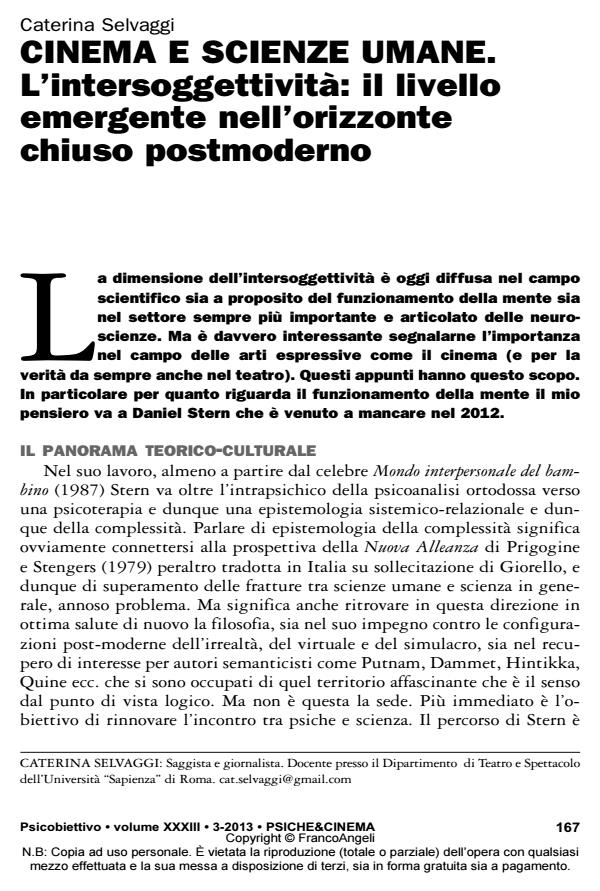Cinema e scienze umane. L’intersoggettività: il livello emergente nell’orizzonte chiuso postmoderno
Titolo Rivista PSICOBIETTIVO
Autori/Curatori Caterina Selavggi
Anno di pubblicazione 2014 Fascicolo 2013/3
Lingua Italiano Numero pagine 12 P. 167-178 Dimensione file 125 KB
DOI 10.3280/PSOB2013-003011
Il DOI è il codice a barre della proprietà intellettuale: per saperne di più
clicca qui
Qui sotto puoi vedere in anteprima la prima pagina di questo articolo.
Se questo articolo ti interessa, lo puoi acquistare (e scaricare in formato pdf) seguendo le facili indicazioni per acquistare il download credit. Acquista Download Credits per scaricare questo Articolo in formato PDF

FrancoAngeli è membro della Publishers International Linking Association, Inc (PILA)associazione indipendente e non profit per facilitare (attraverso i servizi tecnologici implementati da CrossRef.org) l’accesso degli studiosi ai contenuti digitali nelle pubblicazioni professionali e scientifiche
L’Autrice focalizza l’importanza dell’elemento intersoggettivo nella capacità relazionale degli autori di cinema nel costruire situazioni filmiche in cui gli stessi comportamenti siano espressione di momenti di intersoggettività. Registi come Gianni Amelio e Matteo Garrone sono esempi di ciò che Daniel Sterm chiamava "Now moments" in quanto fenomeni di coscienza e di esperienza condivisa, in cui non solo le parole ma l’intera corporeità diventa veicolo di intersoggettività. Questo incoraggia il livello emergente inteso come esperienza di acquisizione di novità che diviene protagonista sia della ricerca sul funzionamento della mente sia nelle recenti scoperte neuroscientifiche ("neuroni specchio", scoperti da Rizzolatti e Gallese). Tutto ciò valorizza l’epistemologia della complessità avviata da Gregory Bateson. Persino autori di cinema postmoderno (Tarantino) sono ottimi esempi della "instabilità sistemica" di Prigogine.
Parole chiave:Cinema; intersoggettività; relazione; complessità; comunicazione non verbale; neuroni specchio.
Caterina Selavggi, Cinema e scienze umane. L’intersoggettività: il livello emergente nell’orizzonte chiuso postmoderno in "PSICOBIETTIVO" 3/2013, pp 167-178, DOI: 10.3280/PSOB2013-003011